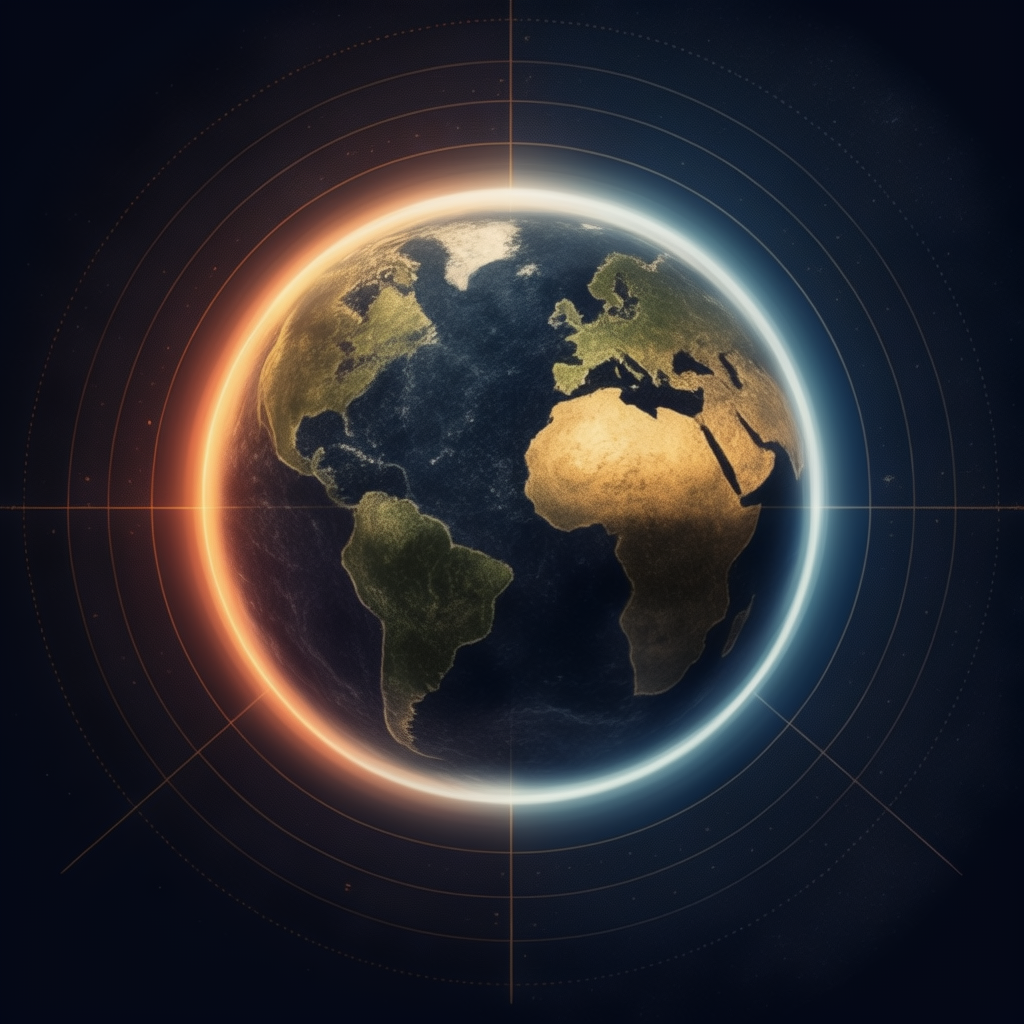The Big Bang Theory and Black Holes: Unraveling the Mysteries of the Universe
The Origin of the Universe: From the Big Bang to the Complexity of Life on Earth
Introduction
The universe is a magnificent tapestry of galaxies, stars, planets, and life, all woven together by the laws of physics and the forces of nature. Understanding the universe’s origin and the processes that led to the formation of galaxies, solar systems, Earth, and life itself is one of humanity’s most profound quests. This blog post explores the journey from the birth of the universe to the diversity of life on Earth, examining the scientific evidence, processes, and theories that explain how everything came to be.
The Origin of the Universe: The Big Bang
The prevailing theory for the origin of the universe is the Big Bang Theory, which suggests that the universe began approximately 13.8 billion years ago. According to this theory, the universe started from an infinitely small, hot, and dense state known as a “singularity.” This singularity was not located in space as we know it but rather contained all of space, time, matter, and energy.
The Initial Expansion
The Big Bang was not an explosion in space; it was an expansion of space itself. In the first fractions of a second, the universe underwent a rapid inflation, expanding exponentially. During this period, the universe cooled rapidly, allowing subatomic particles like quarks, gluons, and electrons to form. These particles eventually combined to create protons and neutrons, the building blocks of atoms.
Formation of Matter
As the universe continued to expand and cool, protons and neutrons combined to form the nuclei of the first elements, primarily hydrogen and helium. This process, known as Big Bang nucleosynthesis, occurred within the first few minutes of the universe’s existence. Over time, as the universe cooled further, electrons combined with these nuclei to form neutral atoms, leading to the formation of the first stable matter.
The Formation of Galaxies, Stars, and Planets
The matter in the early universe was not evenly distributed. Tiny fluctuations in density led to the gradual clumping of matter due to gravity. These clumps grew over millions of years, forming the first stars and galaxies.
Formation of Galaxies
Galaxies formed from massive clouds of gas and dark matter that collapsed under their gravity. As the gas condensed, it ignited nuclear fusion, giving birth to the first stars. Over billions of years, galaxies collided and merged, leading to the diverse structures we observe today. There are an estimated 2 trillion galaxies in the observable universe, each containing billions to trillions of stars.
Formation of Solar Systems
Stars, including our Sun, formed within these galaxies from the gravitational collapse of dense regions of gas and dust. Around 4.6 billion years ago, our solar system began to form from a rotating disk of gas and dust surrounding a newly formed Sun. Over time, particles in this disk collided and stuck together, forming planetesimals, which eventually coalesced into planets, moons, asteroids, and comets.
Formation of Earth
Earth formed about 4.5 billion years ago from the same process. Initially, it was a molten mass, but over time, it cooled, leading to the formation of a solid crust. Volcanic activity released gases, forming Earth’s early atmosphere. Water vapor condensed to form oceans, creating a suitable environment for the emergence of life.
The Role of Dark Matter and Dark Energy
While the matter that makes up stars, planets, and life is visible, most of the universe’s mass is in the form of dark matter, a mysterious substance that does not emit light or energy. Dark matter interacts with visible matter through gravity, playing a crucial role in the formation and structure of galaxies.
Dark energy is an even more mysterious force, thought to be responsible for the accelerated expansion of the universe. Together, dark matter and dark energy make up about 95% of the universe, with only 5% consisting of ordinary matter.
The Role of Consciousness in the Universe
The question of whether consciousness played a role in the formation of the universe is more philosophical than scientific. Some theories, such as the Anthropic Principle, suggest that the universe’s laws and constants are finely tuned to allow for the existence of life and consciousness. However, this remains a topic of debate, with no conclusive scientific evidence linking consciousness to the formation of the universe.
The Formation of the Laws of the Universe
The laws of the universe, such as gravity, electromagnetism, and the nuclear forces, emerged in the first moments after the Big Bang. These laws are described by the fundamental constants of nature, which appear to be finely tuned to allow the universe to develop as it has.
Identification of the Laws
Scientists have identified these laws through centuries of observation, experimentation, and theoretical development. Isaac Newton’s law of gravitation, James Clerk Maxwell’s equations of electromagnetism, and Albert Einstein’s theory of general relativity are examples of how we have come to understand these fundamental forces.
Quantum Processes and the Universe
Quantum mechanics is the branch of physics that deals with the behavior of particles at the smallest scales. Quantum processes played a critical role in the early universe, influencing the formation of matter and the behavior of particles.
Quantum Fluctuations
In the first moments after the Big Bang, quantum fluctuations—temporary changes in energy levels—occurred on a microscopic scale. These fluctuations are thought to have seeded the initial density variations that later led to the formation of galaxies and large-scale structures in the universe.
Quantum Field Theory and Particle Physics
Quantum field theory, which describes how particles interact with fields, is essential for understanding the fundamental particles and forces that govern the universe. The discovery of the Higgs boson, for example, helped confirm the mechanism by which particles acquire mass, a critical aspect of the universe’s structure.
Evolution of Geographies, Life, and Diversity on Earth
Earth’s history is marked by a dynamic evolution of its geographies, life forms, and ecosystems. Over billions of years, the planet has undergone significant changes, leading to the incredible diversity of life and environments we see today.
Formation of Continents and Oceans
The Earth’s surface is divided into tectonic plates that move over time, a process known as plate tectonics. The movement of these plates has led to the formation of continents, mountain ranges, and ocean basins. Volcanic activity, erosion, and other geological processes have continually reshaped the Earth’s surface.
Evolution of Life
Life on Earth began in the oceans about 3.5 billion years ago with simple, single-celled organisms. Over time, through the process of evolution by natural selection, life became more complex. The Cambrian Explosion, around 540 million years ago, saw a rapid diversification of life forms, leading to the emergence of most major animal groups.
Human Evolution and Diversity
Humans evolved from primate ancestors over millions of years. The genus Homo, which includes modern humans, appeared about 2.5 million years ago. Homo sapiens emerged around 300,000 years ago in Africa and eventually spread across the globe.
Human diversity, including differences in skin color, facial features, and body types, is a result of adaptations to different environments and genetic variations over time. Cultural diversity has emerged from the development of languages, traditions, religions, and social structures in different regions.
Diversity of Life and Ecosystems
Earth’s ecosystems are incredibly diverse, ranging from tropical rainforests to polar ice caps. This diversity is driven by variations in climate, geography, and the availability of resources. Evolution has led to the adaptation of species to their specific environments, resulting in a wide range of life forms, from microscopic bacteria to large mammals.
The story of the universe, from the Big Bang to the formation of galaxies, stars, planets, and life on Earth, is a tale of cosmic evolution guided by the laws of physics. While we have made tremendous strides in understanding the universe’s origin and the processes that have shaped it, many mysteries remain. Dark matter, dark energy, the role of quantum processes, and the origins of consciousness are just a few of the puzzles that continue to challenge our understanding.
As we continue to explore the cosmos, the pursuit of knowledge will undoubtedly lead to new discoveries, deepening our understanding of the universe and our place within it. The diversity of life on Earth, shaped by billions of years of evolution, reminds us of the complexity and beauty of the natural world, a world that began in the fiery birth of the cosmos and has evolved into the vibrant, dynamic planet we call home.
The universe is a vast, complex, and ever-expanding realm filled with countless wonders that have fascinated humans for millennia. Among these wonders, the Big Bang Theory and black holes stand out as two of the most intriguing and fundamental concepts in cosmology. These phenomena not only shape our understanding of the universe’s origin and structure but also challenge the limits of our scientific knowledge. This blog post delves into the Big Bang Theory and black holes, exploring their significance, interconnections, and the mysteries they continue to present to scientists and enthusiasts alike.
The Big Bang Theory: The Birth of the Universe
The Big Bang Theory is the leading explanation for the origin of the universe. It posits that the universe began approximately 13.8 billion years ago from an extremely hot and dense state, often referred to as a “singularity.” This singularity is thought to have contained all the matter, energy, and spacetime that would eventually expand and evolve into the universe we observe today.
The Initial Explosion
The term “Big Bang” might suggest a violent explosion, but in reality, it was an expansion of space itself. In the moments following the Big Bang, the universe expanded rapidly in a process known as “inflation.” During this period, the universe cooled down enough for subatomic particles to form and eventually combine into simple atoms, primarily hydrogen and helium.
Formation of Cosmic Structures
As the universe continued to expand and cool, gravity began to take hold, pulling matter together to form the first stars and galaxies. Over billions of years, these cosmic structures evolved, leading to the formation of planets, solar systems, and eventually, life as we know it.
Evidence Supporting the Big Bang Theory
Several key pieces of evidence support the Big Bang Theory:
- Cosmic Microwave Background (CMB) Radiation: Discovered in 1965, the CMB is the afterglow of the Big Bang, providing a snapshot of the early universe. It serves as one of the most compelling pieces of evidence for the Big Bang.
- Redshift of Galaxies: Edwin Hubble’s observation that galaxies are moving away from us, with more distant galaxies receding faster, supports the idea that the universe is expanding, as predicted by the Big Bang Theory.
- Abundance of Light Elements: The observed abundance of hydrogen, helium, and other light elements in the universe aligns with predictions made by Big Bang nucleosynthesis.
Black Holes: The Dark Heart of the Universe
Black holes are regions in space where the gravitational pull is so strong that nothing, not even light, can escape. These enigmatic objects are formed when massive stars collapse under their gravity at the end of their life cycles.
The Formation of Black Holes
Black holes typically form from the remnants of massive stars that have undergone supernova explosions. When the core of such a star collapses, it can create a black hole if the remaining mass is above a certain threshold, known as the Tolman–Oppenheimer–Volkoff limit. The resulting black hole is characterized by an event horizon, the boundary beyond which nothing can escape.
Types of Black Holes
Black holes come in various sizes, and they are generally categorized into three types:
- Stellar Black Holes: Formed from the collapse of massive stars, these black holes typically have masses ranging from a few to several tens of times that of our Sun.
- Supermassive Black Holes: Found at the centers of most galaxies, including our own Milky Way, these black holes have masses ranging from millions to billions of times that of the Sun.
- Primordial Black Holes: Hypothetical black holes that could have formed shortly after the Big Bang, with masses much smaller than stellar black holes.
The Event Horizon and Singularity
The event horizon marks the point of no return around a black hole. Once something crosses this boundary, it is inexorably drawn towards the black hole’s center, or singularity, where the laws of physics as we know them break down. The singularity is a point of infinite density and zero volume, challenging our understanding of space, time, and gravity.
The Connection Between the Big Bang and Black Holes
While the Big Bang Theory and black holes may seem like distinct phenomena, they share intriguing connections that offer insights into the nature of the universe.
Singularity: A Common Origin
Both the Big Bang and black holes involve singularities, points where the gravitational field becomes infinitely strong, and space and time cease to function in conventional ways. The singularity at the heart of a black hole is similar to the initial singularity from which the universe is thought to have emerged. However, while the singularity of a black hole is contained within an event horizon, the Big Bang singularity led to the expansion of space itself.
Theoretical Connections
Some theories suggest that black holes could play a role in the creation of new universes. According to the concept of “black hole cosmology,” each black hole might contain a singularity that could potentially give rise to a new universe, much like our own Big Bang. This idea is still speculative and remains a topic of active research and debate in theoretical physics.
The Hawking Radiation and Black Hole Evaporation
Stephen Hawking proposed that black holes are not entirely black; they emit radiation due to quantum effects near the event horizon. This radiation, known as Hawking radiation, could eventually cause black holes to lose mass and evaporate over time. The study of Hawking radiation has deep implications for understanding the relationship between quantum mechanics, general relativity, and the early universe.
The Mysteries and Future of Cosmology
Despite the progress made in understanding the Big Bang and black holes, many questions remain unanswered. For instance, what exactly happened at the moment of the Big Bang? What lies beyond the event horizon of a black hole? Are there connections between black holes and the birth of new universes?
As we continue to explore these questions, advancements in technology, such as the James Webb Space Telescope, gravitational wave detectors, and quantum computing, may provide new insights into the universe’s most profound mysteries.
Conclusion
The Big Bang Theory and black holes represent some of the most fascinating and complex aspects of our universe. While they are distinct phenomena, their interconnections offer tantalizing clues about the nature of reality, the origins of the universe, and the ultimate fate of everything within it. As science advances, our understanding of these cosmic phenomena will likely deepen, revealing more about the universe’s past, present, and future.







